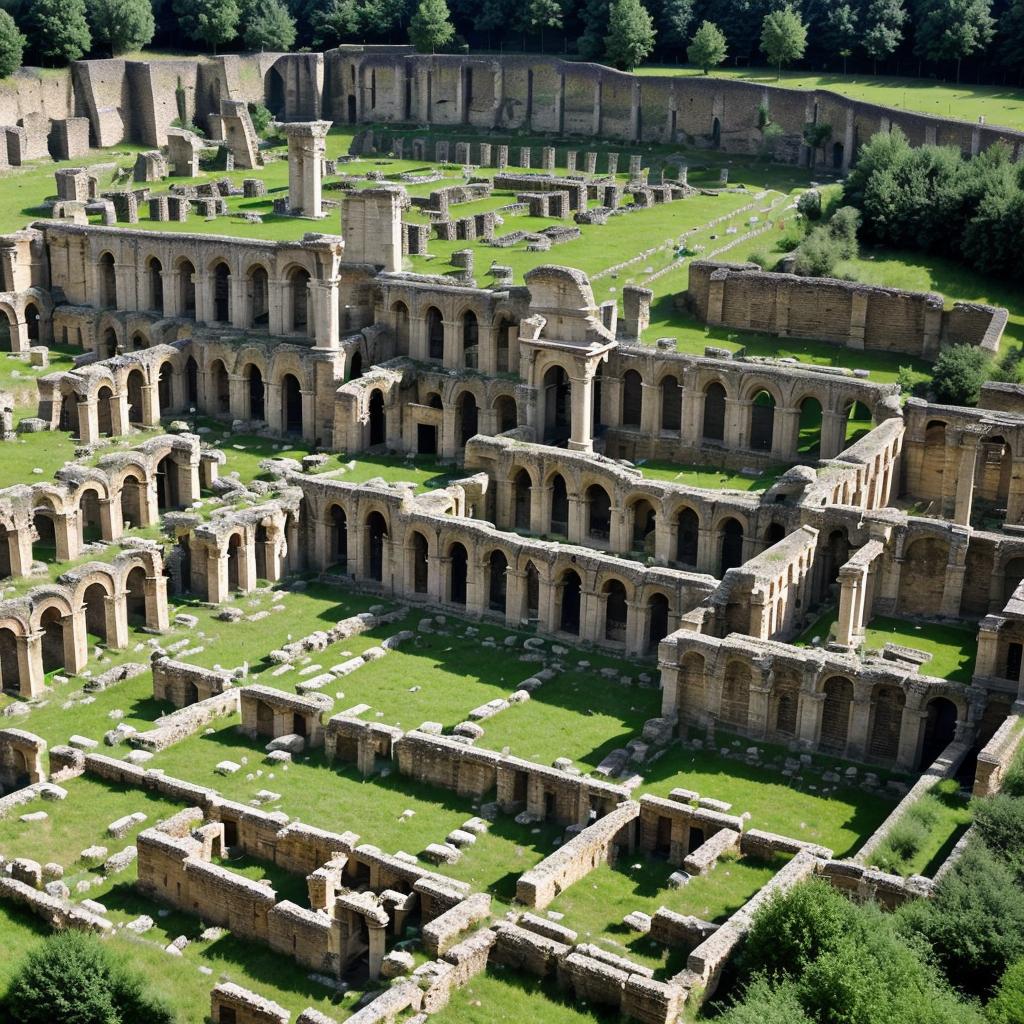Luxembourg, a small landlocked country in Western Europe, may not be the first place that comes to mind when one thinks of ancient Roman history. However, this picturesque nation boasts a rich tapestry of Roman remains that offer a fascinating glimpse into its past. From well-preserved structures to archaeological sites, Luxembourg’s Roman heritage is a testament to its historical significance. Join us on an exploration of the top ten Roman remains in Luxembourg, where ancient history comes to life.
1. The Roman Villa Echternach
Situated in the town of Echternach, the Roman Villa Echternach stands as a remarkable testament to the Roman presence in the region. Dating back to the 1st century AD, this well-preserved villa showcases intricate mosaics and architectural details, providing visitors with a vivid understanding of the opulent lifestyle of the Roman elite.
2. The Roman Fort of Dalheim
Located in the town of Dalheim, the Roman Fort serves as a captivating historical landmark in Luxembourg. Constructed in the 2nd century AD, this fortification was an essential component of the Roman defensive system along the borders of the empire. Visitors can explore its impressive walls and gain insight into the military strategies of ancient Rome.
3. The Roman Wall of Trier
Although not within the borders of Luxembourg, the Roman Wall of Trier is an essential site to visit, located just across the border in Germany. As one of the most well-preserved Roman city gates, this structure serves as a testament to the advanced engineering prowess of the ancient Romans and offers a glimpse into the architectural marvels of the past.
4. The Roman Baths at Mondorf-les-Bains
The Roman Baths at Mondorf-les-Bains provide an intriguing glimpse into the bathing customs of the ancient Romans. Dating back to the 2nd century AD, these thermal baths showcase intricate heating systems and captivating architectural elements, highlighting the importance of communal bathing practices in Roman culture.
5. The Roman Villa Borg
Although not situated directly in Luxembourg, the Roman Villa Borg, located in Germany, is a significant archaeological site showcasing Roman rural life. With its reconstructed buildings and well-preserved artifacts, the villa offers an immersive experience that allows visitors to envision the daily routines and customs of ancient Roman settlers.

6. The Roman Tower of Titelberg
The Roman Tower of Titelberg, nestled in the lush landscapes of Luxembourg, offers a unique perspective on ancient Roman military architecture. Dating back to the 1st century BC, this watchtower was a crucial element in the Roman defense system, providing strategic surveillance over the surrounding areas and emphasizing the significance of military presence during that era.
7. The Roman Villa Medernach
The Roman Villa Medernach, located in the village of Medernach, provides a comprehensive insight into the luxurious lifestyles of the Roman upper class. With its well-preserved mosaic floors and intricate architectural features, the villa offers a captivating narrative of Roman aesthetics and cultural extravagance, underscoring the opulence that defined the Roman elite.
8. The Roman Road at Echternach
The Roman Road at Echternach, an ancient thoroughfare dating back to the 1st century AD, showcases the advanced engineering skills of the Romans. Visitors can walk along this historic route and marvel at the well-preserved paving stones, gaining a deeper understanding of the Roman transportation network and its impact on the region’s development.
9. The Roman Villa Borghees
Situated near the town of Remerschen, the Roman Villa Borghees serves as an intriguing archaeological site that sheds light on the Roman presence in Luxembourg. With its extensive excavations and informative displays, the villa offers a comprehensive narrative of ancient Roman agricultural practices and rural life, providing valuable insights into the region’s historical evolution.
10. The Roman Crypt of Dalheim
The Roman Crypt of Dalheim, an underground sanctuary dating back to the 3rd century AD, presents an intriguing blend of Roman and early Christian architectural styles. With its intricate frescoes and unique design elements, this crypt offers a compelling glimpse into the religious practices and cultural fusion that characterized the Roman era in Luxembourg.
Luxembourg’s rich tapestry of Roman remains stands as a testament to the enduring legacy of ancient civilizations and their profound influence on the region’s cultural, architectural, and historical development. Exploring these sites provides an immersive journey through time, allowing visitors to connect with the past and gain a deeper appreciation for Luxembourg’s diverse heritage.
Conclusion
Luxembourg’s Roman remains offer a captivating narrative of the region’s historical significance and cultural evolution. From well-preserved villas to ancient fortifications, these sites provide a unique glimpse into the diverse facets of Roman life and its enduring impact on Luxembourg’s heritage. As visitors explore these archaeological treasures, they embark on a compelling journey through time, unraveling the intricate layers of the country’s rich past.
FAQs
Q: Are there any guided tours available for exploring Luxembourg’s Roman remains?
A: Yes, several tour operators in Luxembourg offer guided tours that provide in-depth insights into the history and significance of the Roman remains in the country. Visitors can enjoy informative and engaging experiences led by knowledgeable guides.
Q: What are the opening hours for visiting the Roman sites in Luxembourg?
A: Opening hours vary depending on the specific site. It is advisable to check the official websites or contact the respective visitor centers for accurate information regarding opening hours, especially during holidays and special events.
Q: Are there any educational programs or activities for children at these Roman sites?
A: Some of the Roman sites in Luxembourg offer educational programs and interactive activities for children, allowing them to engage with history in a fun and informative manner. These programs often include workshops, guided tours tailored for younger audiences, and hands-on learning experiences.